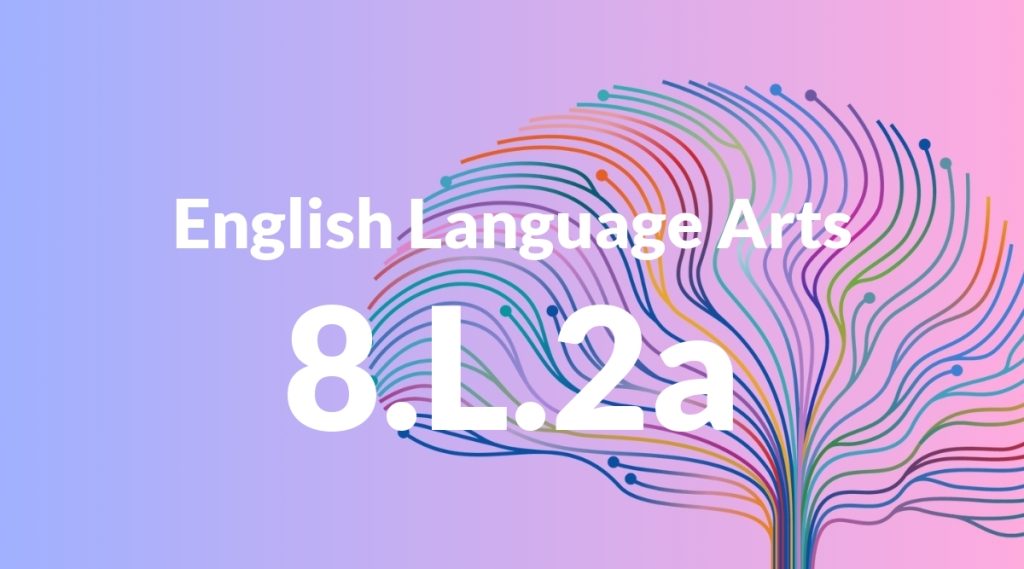Standard: 8.L.2a – Use punctuation (comma, ellipsis, dash) to indicate a pause or break.
Grade level: Grade 8
Subject: English Language Arts
Domain: Language
Teacher Overview
This standard focuses on the use of commas, ellipses, and dashes to indicate pauses or breaks in writing. Mastery of this standard is crucial as it helps students develop clearer and more effective written communication. Understanding and correctly using these punctuation marks can significantly enhance the readability and impact of their writing. Students should be comfortable with basic sentence structures and familiar with the primary uses of commas, ellipses, and dashes. They should have some experience writing compound sentences and understand basic grammar rules.
Mastery of this standard will prepare students to use punctuation more effectively to enhance their writing. They will be better equipped to tackle more advanced grammar concepts and varied sentence structures, contributing to their overall writing proficiency.
Common Misconception 1
A common misconception is that commas, ellipses, and dashes can be used interchangeably. This is incorrect because each punctuation mark serves a unique purpose in writing. Commas often separate items or clauses, ellipses indicate omitted material or a trailing off of thought, and dashes can create emphasis or signify an abrupt change.
Intervention 1
To remediate this misconception, provide students with exercises that focus on the specific uses of each punctuation mark. Use examples from literature and student writing to illustrate the distinct roles of commas, ellipses, and dashes.
Common Misconception 2
Another misconception is that overusing these punctuation marks makes writing more sophisticated. Overuse can actually make writing confusing and less effective. Each punctuation mark should be used purposefully to enhance clarity and meaning.
Intervention 2
Encourage students to practice using punctuation marks in moderation. Provide feedback on their writing and highlight instances where punctuation is used effectively versus where it may be overused. Use peer review sessions to help students recognize and correct overuse.
Prerequisite Knowledge
Students should have a basic understanding of sentence structure and the primary uses of commas, ellipses, and dashes. They should also be familiar with basic grammar rules and have experience writing simple to compound sentences.
Subsequent Knowledge
After mastering this standard, students will be able to use punctuation more effectively to enhance their writing style and clarity. They will also be prepared to tackle more advanced grammar concepts and varied sentence structures.
Instructional Activities
- Punctuation scavenger hunt in literature
- Writing dialogue with correct punctuation
- Peer review and editing exercises focusing on punctuation
- Creating dramatic monologues with appropriate pauses
- Punctuation practice worksheets




